Carlos N. Silla Jr.
A multimodal approach for multi-label movie genre classification
Jun 01, 2020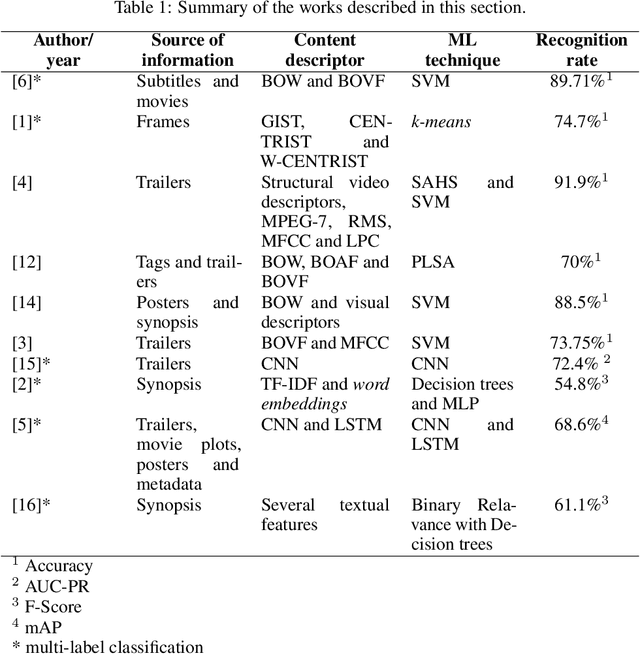

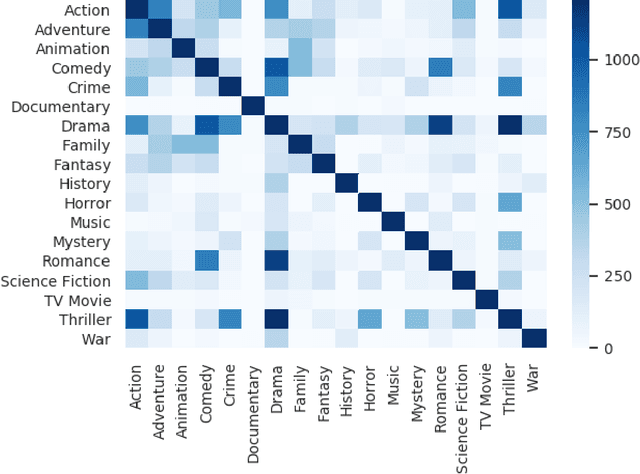
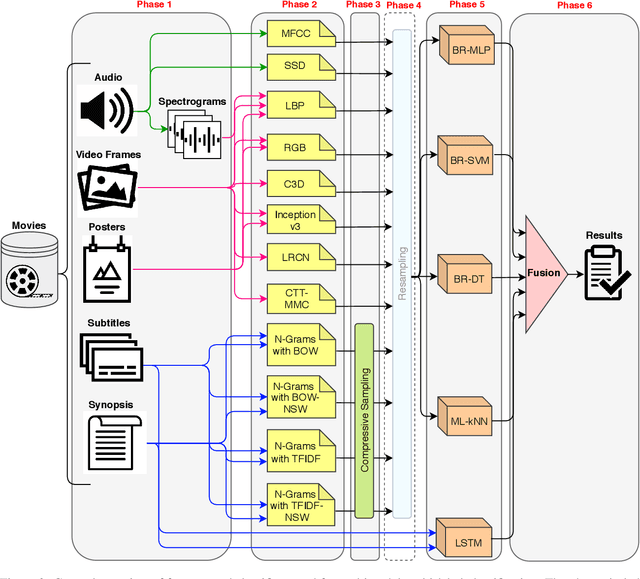
Abstract:Movie genre classification is a challenging task that has increasingly attracted the attention of researchers. In this paper, we addressed the multi-label classification of the movie genres in a multimodal way. For this purpose, we created a dataset composed of trailer video clips, subtitles, synopses, and movie posters taken from 152,622 movie titles from The Movie Database. The dataset was carefully curated and organized, and it was also made available as a contribution of this work. Each movie of the dataset was labeled according to a set of eighteen genre labels. We extracted features from these data using different kinds of descriptors, namely Mel Frequency Cepstral Coefficients, Statistical Spectrum Descriptor , Local Binary Pattern with spectrograms, Long-Short Term Memory, and Convolutional Neural Networks. The descriptors were evaluated using different classifiers, such as BinaryRelevance and ML-kNN. We have also investigated the performance of the combination of different classifiers/features using a late fusion strategy, which obtained encouraging results. Based on the F-Score metric, our best result, 0.628, was obtained by the fusion of a classifier created using LSTM on the synopses, and a classifier created using CNN on movie trailer frames. When considering the AUC-PR metric, the best result, 0.673, was also achieved by combining those representations, but in addition, a classifier based on LSTM created from the subtitles was used. These results corroborate the existence of complementarity among classifiers based on different sources of information in this field of application. As far as we know, this is the most comprehensive study developed in terms of the diversity of multimedia sources of information to perform movie genre classification.
COVID-19 identification in chest X-ray images on flat and hierarchical classification scenarios
May 06, 2020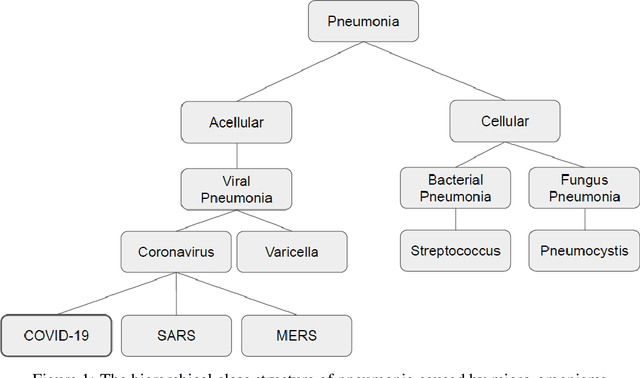
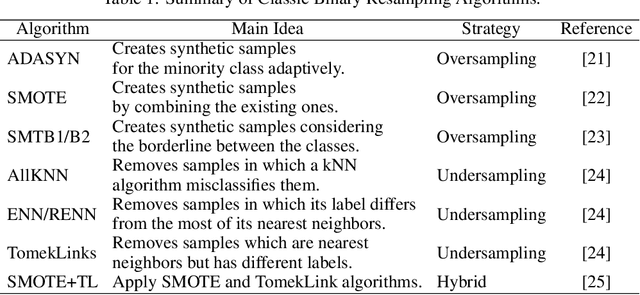
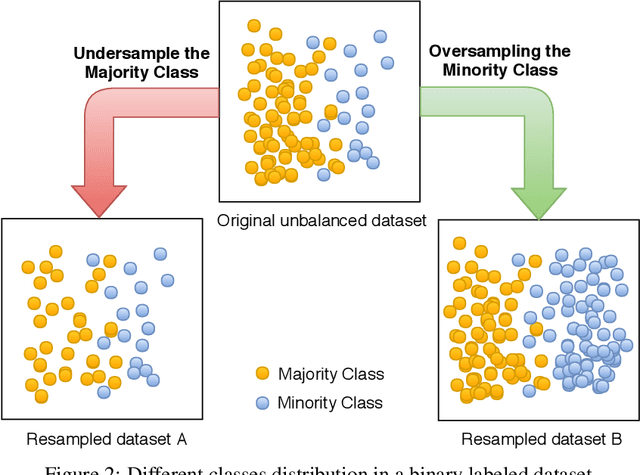
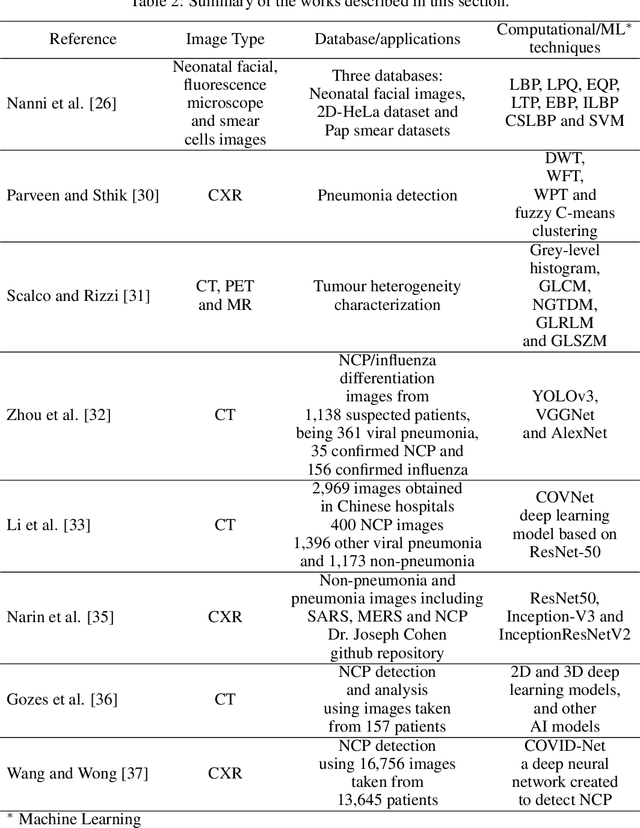
Abstract:The COVID-19 can cause severe pneumonia and is estimated to have a high impact on the healthcare system. The standard image diagnosis tests for pneumonia are chest X-ray (CXR) and computed tomography (CT) scan. CXR are useful in because it is cheaper, faster and more widespread than CT. This study aims to identify pneumonia caused by COVID-19 from other types and also healthy lungs using only CXR images. In order to achieve the objectives, we have proposed a classification schema considering the multi-class and hierarchical perspectives, since pneumonia can be structured as a hierarchy. Given the natural data imbalance in this domain, we also proposed the use of resampling algorithms in order to re-balance the classes distribution. Our classification schema extract features using some well-known texture descriptors and also using a pre-trained CNN model. We also explored early and late fusion techniques in order to leverage the strength of multiple texture descriptors and base classifiers at once. To evaluate the approach, we composed a database, named RYDLS-20, containing CXR images of pneumonia caused by different pathogens as well as CXR images of healthy lungs. The classes distribution follows a real-world scenario in which some pathogens are more common than others. The proposed approach achieved a macro-avg F1-Score of 0.65 using a multi-class approach and a F1-Score of 0.89 for the COVID-19 identification in the hierarchical classification scenario. As far as we know, we achieved the best nominal rate obtained for COVID-19 identification in an unbalanced environment with more than three classes. We must also highlight the novel proposed hierarchical classification approach for this task, which considers the types of pneumonia caused by the different pathogens and lead us to the best COVID-19 recognition rate obtained here.
 Add to Chrome
Add to Chrome Add to Firefox
Add to Firefox Add to Edge
Add to Edge